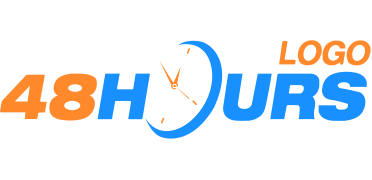Custom signage can be a profitable part of your graphic design business. Creating a sign to draw people into a store or place up on a billboard is a lot of fun. You get a chance to show off the personality of the brand and add in a few of your favorite design features, such as a font you love or three-dimensional extras.
How Effective Is Signage Advertising?
According to the UAE Digital Signage Market Forecast & Opportunities report, the market will hit $1.14 billion by 2023 with an 18% plus CAGR. Signs pull in foot traffic and help set a business apart from the competition.
However, it’s easy to make some mistakes in your custom signage designs. Here are the things to focus on if you want your efforts to stand out and bring your clients results.
Mistake #1: Ignoring Visuals
An excellent custom sign is a mix of both graphics and text. The pictures in your design work as hard to tell a story as the words do. Make sure they are relevant, unique and convey the message you want to get across in your design.
Presenting a consistent image with color and style can increase revenue 23% or more.
Takeaway: Your custom signage design should be a mix of both text and images. You still want to allow white space so the user can take it all in.
Mistake #2: Not Considering Distance
When creating your design, consider the different angles and distances the audience might view it from. For example, a billboard is going to be viewed from a vehicle as the person moves past. Text must be large enough to take in. However, you also want to keep it very short as the consumer is likely to just glance at the sign.
Takeaway: Billboards require larger fonts and shorter phrases.
Mistake #3: Forgetting the Competition
Pay attention to the signs around where yours will be located. If another store has a similar color or size sign, your design could fade into the background. While you want to stay true to the brand color palette and style, you should also add pops of color to attract attention.
Takeaway: Study signs that will be around yours but also look at competitor signs to see how you can make yours stand out.
Mistake #4: Leaving Out the CTA
Your call to action (CTA) should be to the point and personal. Studies show using first-person phrasing results in 90% clickthrough rates. Think about the goal of the sign. Is the intention to bring people into the store? Add a line that states, “Come inside to see what’s new.”
Takeaway: Your CTA is your opportunity to invite people to take the action you want them to complete.
Mistake #5: Poor Kerning
Designers sometimes create a sign and then assume it will work well for the business. However, depending upon the font you choose, you may need to tweak the spacing to make it readable. For example, if the space between two words runs together, the sign might become indecipherable.
Instead, view the sign from different distances. Stand up and walk across the room from your computer screen and see if the words are still readable. Make adjustments to kerning as needed to keep the text clear and understandable.
Takeaway: Minor tweaks to spacing can make a huge difference in the readability of your custom signs.
Mistake #6: Lack of Communication
If you can figure out what your client wants before you begin your design, you’ll have less redos and wind up with a sign your customer loves. Take the time to ask the right questions to figure out their vision for the project.
You should also talk to the client throughout the design process, getting their input along the way. It’s much easier to change a color scheme before you design the rest of the elements around it, for example.
Takeaway: One of the most vital parts of design work is learning to listen to what the client wants and adapt it into something amazing.
Get Feedback
Once your sign is complete, ask for feedback from other designers you trust. Gather the critiques and make the changes that work for your vision. Talk to your client and make any additional adjustments. With a little extra effort, your signage will stand out and you’ll gain additional work via word-of-mouth referrals.
Eleanor is the editor-in-chief at Designerly Magazine. She was the director at a marketing agency prior to becoming a freelance web designer. Eleanor lives in Philly with her husband and dog, Bear.
